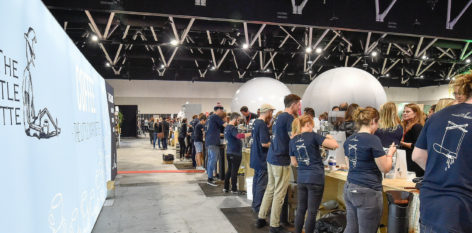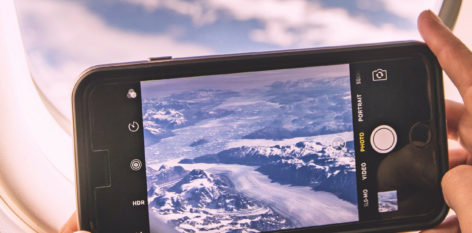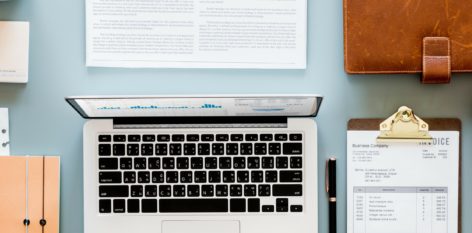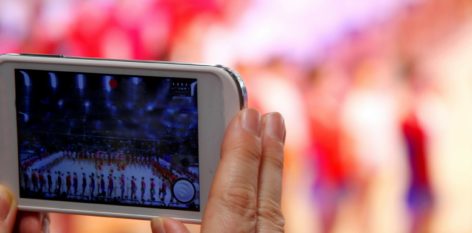This year’s TEDxSydney was undoubtedly a BIG event for many. Not only was it the largest audience to date, with over 5,000 people in attendance, but the collection of incredible speakers, performers and connections made, left a huge impression on those that came to seek inspiration, spark creativity and discover a little something more about HumanKind.
We got together with some of our TEDxSydney writers to find out some of their biggest takeaways from the day.
Don’t be afraid to learn something new
“One of my favourite takings from this year’s TEDxSydney would have to be Eddie Woo’s talk on seeing Mathematics through a different lens. Referencing repetitive patterns that show up in nature throughout the world, he demonstrated to the audience a new perspective when it came to maths. How many of us forgo learning something because we think we’re not good enough? If we were all willing to trust in our innate capacity to transform information into something we understand, we could expand our knowledge phenomenally.”
There’s beauty in ideas that come from lived experience
“I love Fast Ideas. There, I said it. I know, I know how can they compare to experts putting their ideas on the prestigious TEDxSydney record, but the authenticity of community ideas that come from lived experience is hard to beat. This year was no exception, with the showmanship of each 60-second pitch, dazzlingly MC’ed by TEDxSydney curator Fraser Orford, was an event stand out. Chyloe Kurdas’ goal kicking fight to establish a women’s Aussie rules football league was the second of my top 5, with the diaspora of Ian Strange’s house art, Thomas Oxley’s telepathic brain communicator and Odette’s emotive rap charged performance, filling the final 3 spots.”
Listening is powerful if you do it right
“So often we speak without thinking, but do you ever catch yourself hearing without really listening? I know I do. But Lucinda Beamon, FactCheck Editor at The Conversation reminded us all about the power of truly listening to one another. Explaining to TEDxSydney attendees, that when you have a disagreement or argument with someone, your intent should not be to prove your partner wrong while constantly thinking of your next point to put forward, but instead to continually search for some small amount of understanding – because in that tiny space of mutual agreement (no matter how small) is where you both find personal progress – and potentially so too does humankind.”
Talks that speak to each other
“Something I love at TEDxSydney is how often the talks themselves seem to be speaking to each other. In 2018, I was struck by the relationship between an artist and a researcher, who seemed to be having that stereotypical (even inevitable) Sydney chat about real estate. Artist Ian Strange’s talk documented his very moving body of work, turning houses scheduled for demolition – all around the world – into artworks that feel unheimlich – unhomely and uncanny. Broken, or painted black, or with huge, gaping holes cut into them, these houses reflect the vulnerabilities of families and economies. Professor of Urban and Regional Planning, Nicole Gurran, seemed to respond to the challenge implicit in Strange’s work. She looked at why we need to get away from property speculation as a sport and how we can create better access to housing through inclusionary planning. Bunurong, Tasmanian and Yuin man, writer Bruce Pascoe told us how false histories that deny the overwhelming evidence of Aboriginal agriculture before colonisation are a damaging part of the lie that is Terra Nullius. And Moorambilla Voices, led by the inspiring Michelle Leonard, reminded us that feeling at home – feeling like we belong – is about having a voice and singing your heart out.”
The world’s first digital spinal cord
“This year’s TEDxSydney saw an unprecedented collection of great minds, none less than Aussie neurosurgeon Thomas Oxley who is the Director of Innovation Strategy at Mount Sinai Hospital in New York City and the Head of Vascular Bionics Laboratory at the University of Melbourne.
Oxley has developed the world’s first digital spinal cord -essentially, a system that is inserted as a stent into blood vessels next to the motor cortex that can record brain activity. This activity is then transmitted, decoded and passed wirelessly through the skin to a receiver. In other words, the system allows you to control an external device through the power of thought.”





